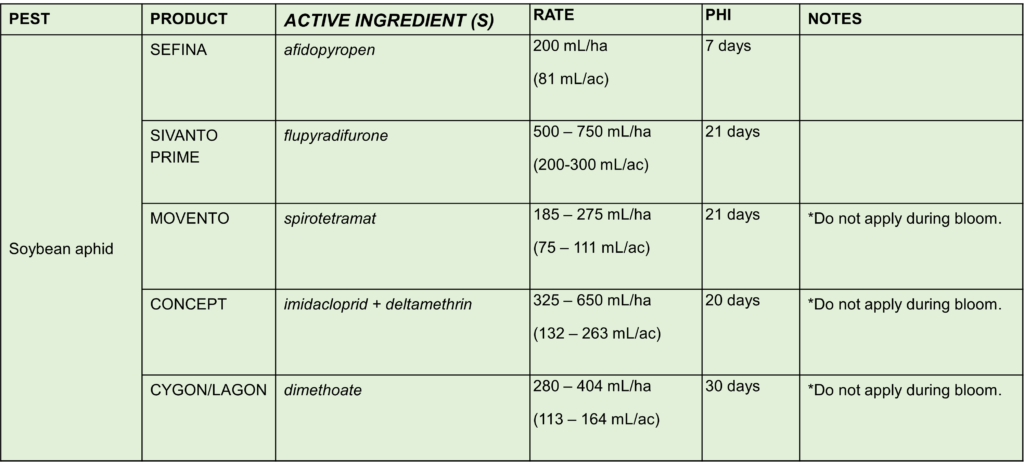A few pests are starting to show up in fields. If you haven’t had a chance to take a look yet, plan to check those high risk fields that are prone to seeing soybean aphids (soybeans) or western bean cutworm (corn and dry beans) in the next week or so.
Soybean aphids: Soybean aphids are showing up in a few fields in different regions but only a small number have reached threshold so far. Now that soybeans are entering R1, weekly scouting is important. Beneficials are showing up and should increase even more with wheat and hay harvest underway. They’ve been busy in those crops keeping pests under control for the most part. Hot temperatures (30oC+) halt aphid reproduction and humid conditions (esp with closed canopies) help the entomopathogens (insect killing fungus) develop. With any luck, while you are scouting, you might find aphid mummies – dead aphids that were parasitized by tiny wasps (1) or infected by fungus (2). Other important beneficials include ladybugs (adults and larvae – 3), syrphid fly larvae (4) or minute pirate bugs (adults – 5 or nymphs).

During R1 to R5 stage of soybeans, an insecticide application is only required once 80% of the plants in the field have at least 250 aphids per plant and it is apparent that populations are increasing. This means scouting the field more than once. This threshold gives an approximate 7–10-day lead time before the aphids would reach the economic injury level (~600 aphids per plant), where the cost of control is equal to yield loss. Stressed, shorter beans can’t tolerate as many aphids, so don’t let populations go passed 500 aphids per plant on stressed beans.
If you need help to confirm whether an application is needed or if beneficials will keep up, use the Aphid Advisor App. It’s free and calculates the aphid growth potential (uses 7 day forecast for the location) and the feeding potential of the beneficials you are seeing before recommending a spray or not. Keep in mind that lambda-cyhalothrin products (ie. Matador and Silencer) can not be used this year on soybeans but a few other products are still available for use:

Western bean cutworm: Western bean cutworm moths are starting to be captured in traps. If you haven’t put your trap up yet, now is the time. Don’t forget to add the trap site to the GLMPMN. We are also starting to find eggs in hot spot regions. The corn is still too young for the larvae that hatch to survive without a tassel in the fields we scouted but any early planted corn could have enough of a developing tassel inside to feed them.
For Corn: To determine if control is needed, fields should be scouted 1-2 times per week in mid-July to early August to count the number of egg masses on 20 plants in 5 areas of the field. If the cumulative count of egg masses reaches 5%, then insecticide application is warranted. Best stage to apply insecticide is fresh silk stage. See the Crop Protection Hub for products registered, though again, lambda-cyhalothrin products can not be used on corn.
For Dry Beans: You have a bit of a wait still. Scouting is not a viable option so monitor fields with traps. Once peak flight occurs, about 10 – 21 days later, an insecticide application is warranted if pods are starting to develop. More info on WBC management in dry beans can be found here: https://fieldcropnews.com/2022/07/should-i-spray-my-dry-beans-for-western-bean-cutworm-and-if-so-when/